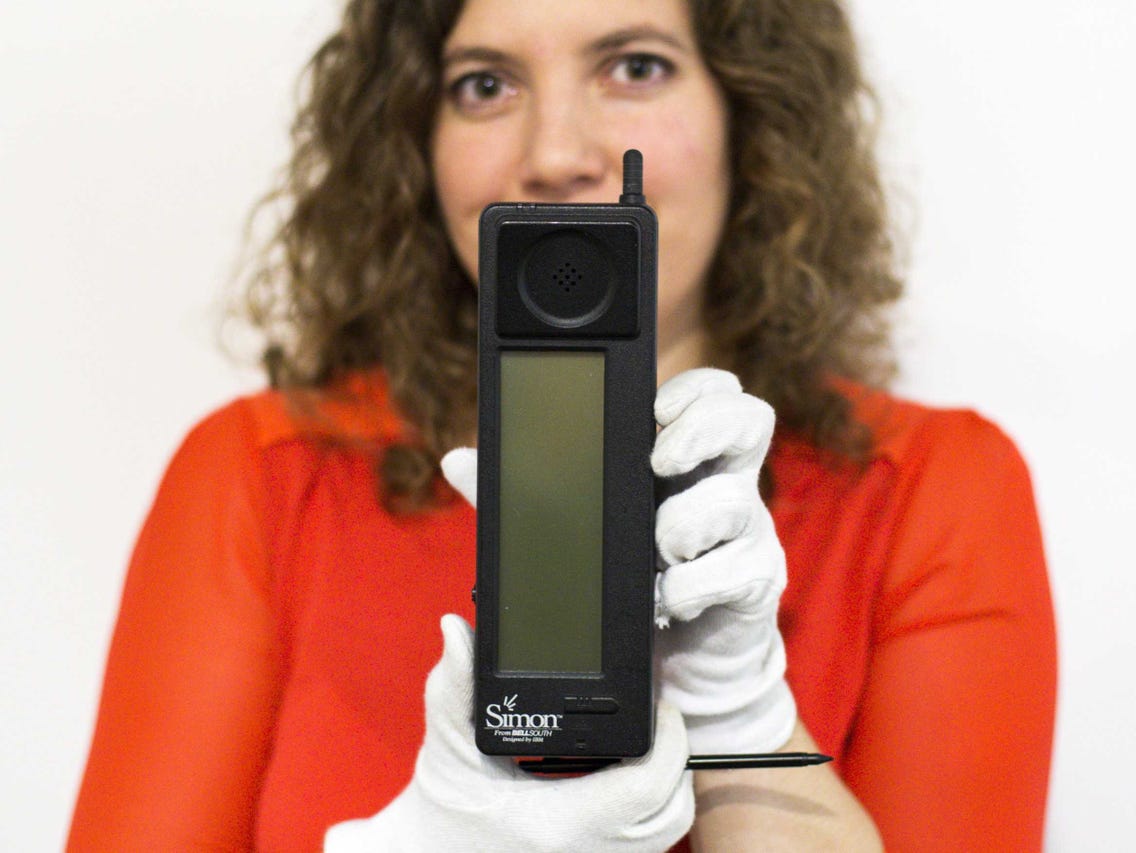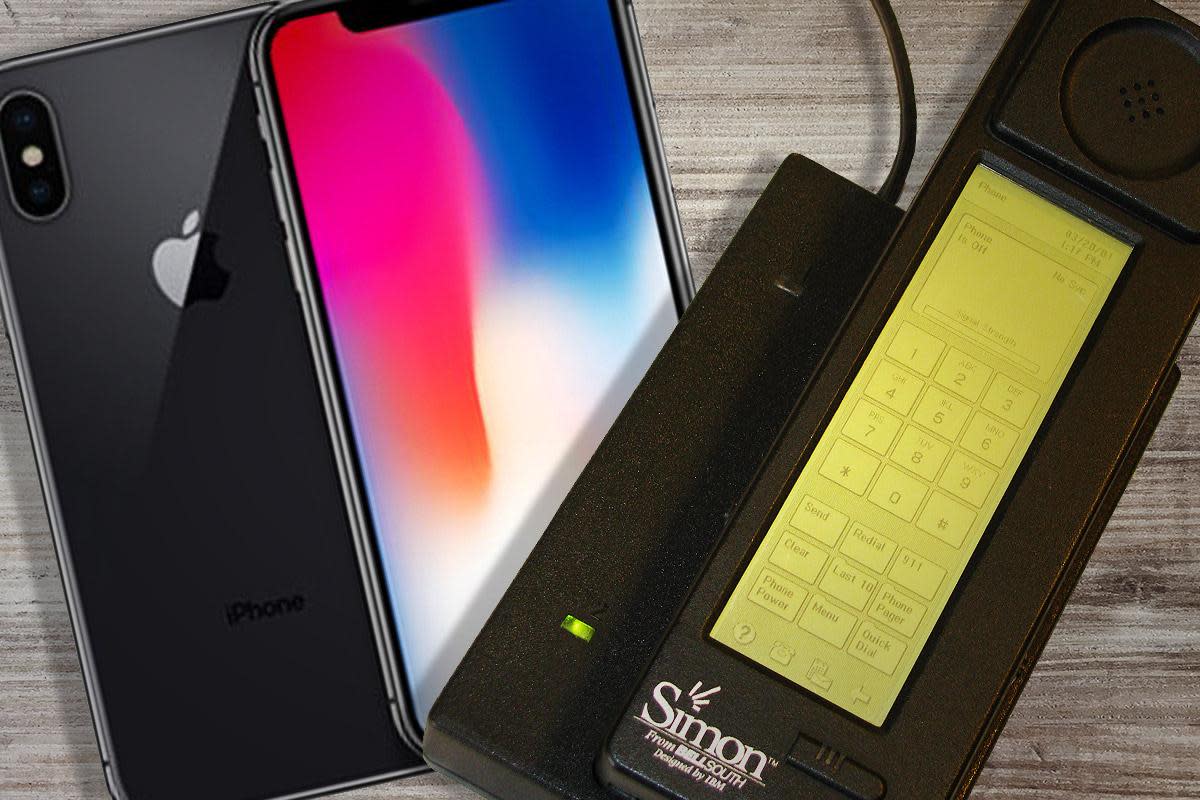Although personal mobile phones have been around since the 1970s, the invention of the smartphone has changed the world. And the first touchscreen phone moved us from everyday to Star-Trekkian.
The three decades between the first cell phone and the first smartphone also brought in the introduction of the internet for common consumption. And that innovation started the very beginning of the revolution we see today in digital telecommunication.
So, where have we come from since that historic day in 1992, and how has the smartphone technology gone on affecting us as humans and consumers? Up next we’re going to tell you about the first touchscreen phone.

The First Smartphone
Created by IBM, the first smartphone was developed in 1992 and available for purchase in 1994. The Simon Personal Communicator (SPC) was created.
Although not very lightweight and elegant, the system still featured many elements that became staples for any subsequent smartphone.
The SPC, for instance, was fitted with a touch screen and the ability to send and receive both emails and faxes.
It had a calendar, an address book, and a native scheduler for appointments. It also featured keyboards with a normal and predictive stylus input panel.
These features were distinct and sufficiently advanced to make it worthy of the designation “The First Smartphone of the World.”
Simon Personal Communicator (SPC)
Aside from being able to make and receive mobile phone calls, Simon was also able to send and receive faxes, emails, and website info.
Simon provided various applications including an address book, calendar, appointment scheduler, calculator, world time clock, electronic notepad, hand-written notes, and regular and predictive stylus input keyboards.
It has a liquid-crystal display (LCD) and is supported by a PC Card. Its internal hardware includes NEC’s Vadem VG230 (CMOS) system-on-a-chip ( SoC), Sony, and Hitachi’s MOS random-access memory (RAM) chips.
It also has Intel and Hitachi’s flash memory (floating-gate MOS), and Cirrus Logic modem chips. Although Simon was aimed at deep-pocketed business people, back in the mid-90s, cell coverage was still spotty and costly.
An optional cable allowed the owner of Simon to plug it into a standard phone jack for making calls via more secure and less costly landline systems.
Simon’s Accessories
Every Simon was shipped with a base charging station, two nickel-cadmium batteries, and a leather protective cover.
Extra was a Motorola PCMCIA pager card, an RS232 adapter cable for use with PC-Link to access files from a personal computer, and an RJ11 adapter cable to allow voice and data calls to be made over POTS landlines.
The RJ11 adapter has helped users minimize costly mobile phone bills or make calls where there was no cellular coverage in 1994.
Touchscreens in the early 1990s weren’t necessarily non-existent, but they weren’t too popular. Simon is believed to be the first phone with a touchscreen commercially available, although earlier PDA devices had displayed various portable touchscreen technologies.
With an included stylus, Simon’s interface could be navigated, albeit with a finger much less quickly.
Let’s Talk About the Price
Simon was, of course, clunky and absurdly priced by today’s standards. But for a do-it-all gizmo in the mid-’90’s, its price tag of $1,100 could evoke a mere shrug from most of us now.
And if you signed BellSouth a two-year deal, you could get it for $900; the subsidized price gradually fell to $600.
The phone itself was measuring 8 inches long by 2.5 inches wide by 1.5 inches thick and was weighing two ounces north of a pound. Today it would be pretty clunky, but here we are talking about the ’90s. Everyone was wearing Hammer pants and Zubaz, so there wasn’t much pocket space, right?
Where is Simon Now?
IBM and BellSouth did not really have a hit on their hands, considering its features. Simon was on the market for only six months, with about 50,000 units sold.
Businessweek magazine’s product profile cites Simon’s poor battery – it lasted about an hour – and the cool svelter and svelter flip aspect as the negative aspect that lead to Simon’s demise.
It also sounds like IBM and BellSouth lost interest in the project, with IBM in downsizing efforts and BellSouth pouring money to improve their cell network.

Conclusion
While the word “smartphone” was not invented until 1995 with the rise of Simon, the brand itself lost its way. Future generations will likely never know of the name.
It is a good lesson for all entrepreneurs with emerging technologies – you might create something awesome – but you’ve got to keep pushing or others will overtake you.